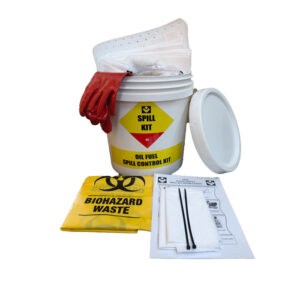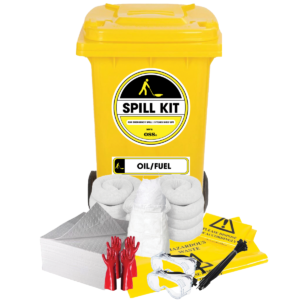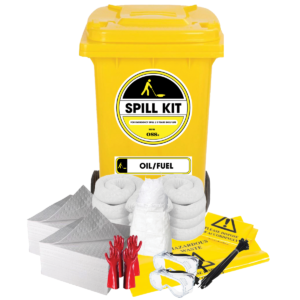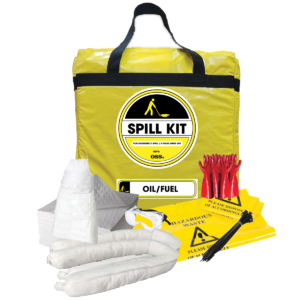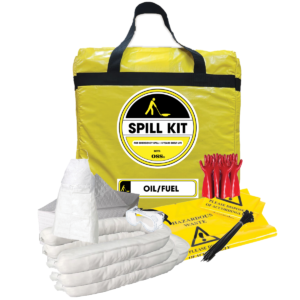Oil/Fuel Spill Kit
Oil/Fuel Spill Kit
An oil/fuel spill kit is a specialized collection of tools, equipment, and materials designed specifically for the containment, cleanup, and safe handling of oil and fuel spills. These spill kits are tailored to address spills involving petroleum-based liquids, such as oil, gasoline, diesel, hydraulic fluids, or other hydrocarbon-based substances.
The specific contents of an oil/fuel spill kit may vary depending on the intended application and the size of the potential spills to be addressed. However, a typical oil/fuel spill kit may include some or all of the following items:
- Oil/Fuel Absorbents: These spill kits typically contain absorbent pads, socks, pillows, or granules specifically designed to absorb and contain oil or fuel spills. These absorbents are hydrophobic, meaning they repel water while selectively absorbing and containing oil-based liquids.
- Booms and Containment Tools: Oil/fuel spill kits may include containment booms or barriers made of absorbent materials to create a physical barrier around the spill, preventing its spread and aiding in the containment process.
- Personal Protective Equipment (PPE): PPE items such as gloves, goggles, or protective coveralls are included to ensure the safety of personnel during the cleanup process, protecting them from potential contact with the spilled substances.
- Cleanup Tools: Items like brooms, brushes, dustpans, scoops, or squeegees are commonly included to facilitate the physical removal and cleanup of oil or fuel spills.
- Waste Disposal Supplies: The kit may provide bags, containers, or other supplies for the proper disposal of contaminated materials or hazardous waste generated during the cleanup process.
- Instruction and Cleanup Guide: Oil/fuel spill kits often include instructions or guides on how to effectively respond to oil or fuel spills and safely handle the cleanup process. These resources provide guidance on proper spill response procedures.
Oil/fuel spill kits are typically stored in easily accessible locations, particularly near areas where oil/fuel storage, transfer, or usage occurs, such as fueling stations, industrial sites, or marine environments.
Showing all 5 results

